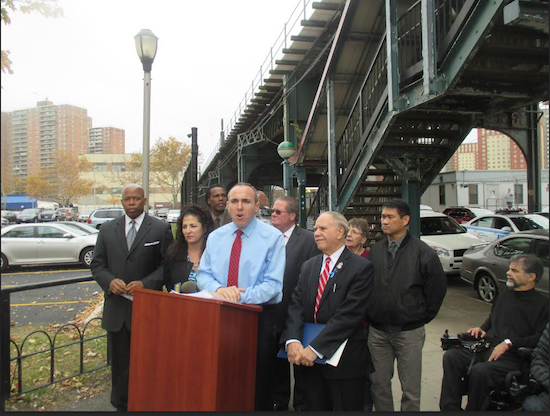Pols to MTA: Fix subways, buses in Southwest Brooklyn
Lawmakers seek improvements on F train, B1 bus, express buses

Southwest Brooklyn residents need better transportation services for an easier commute to and from work, according to a group of elected officials who held a press conference outside the F train’s Neptune Avenue station Monday to demand action from the Metropolitan Transportation Authority (MTA).
Brooklyn Borough President Eric Adams, Councilmember Mark Treyger, state Sen. Diane Savino and Assemblymember Bill Colton were joined by Coney Island community activists outside the train station to call for the restoration and institution of transit services.
Among their demands were express trains on the F train, which the lawmakers said is a heavily congested subway line that runs through increasingly populous neighborhoods; the construction of an elevator at the F train’s Neptune Avenue station; more frequent service on the B1 and B82 bus lines; a return of Saturday service on the X28 express bus line; and restoration of the X29 express bus.

Coney Island
View MoreIn just a little over an hour, you can be transported from the glitz and glamor of Manhattan to the old-school amusement of Brooklyn's storied Coney Island. The destination offers thrills, sun, surf and a unique brand of entertainment that will feel worlds away from the rest of the City.